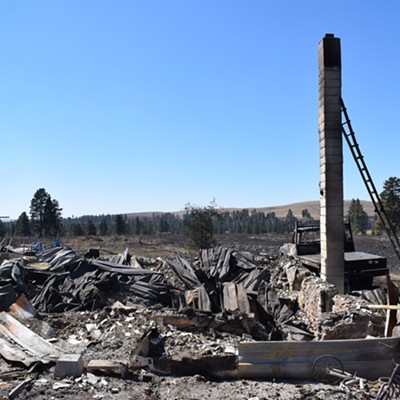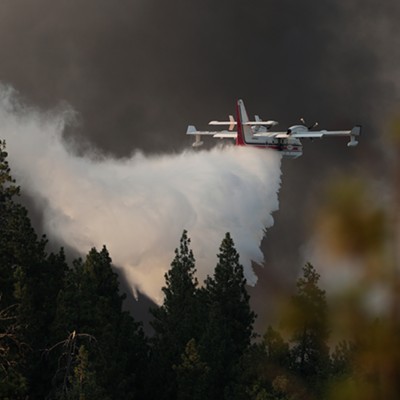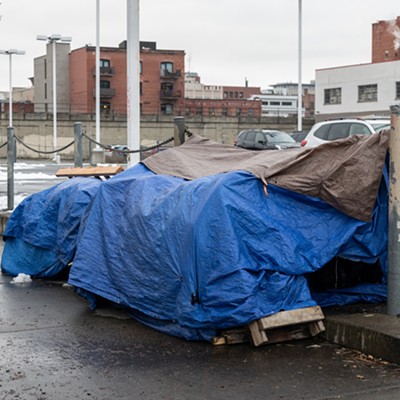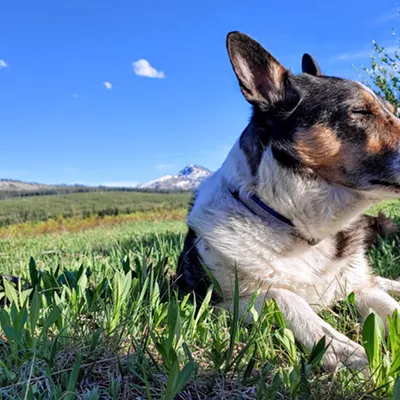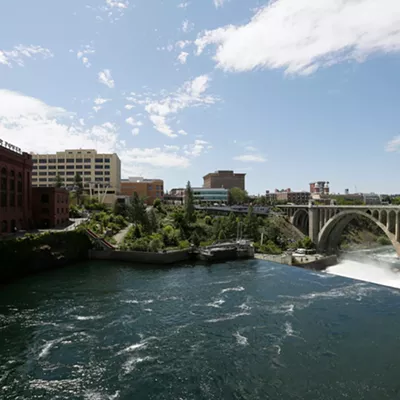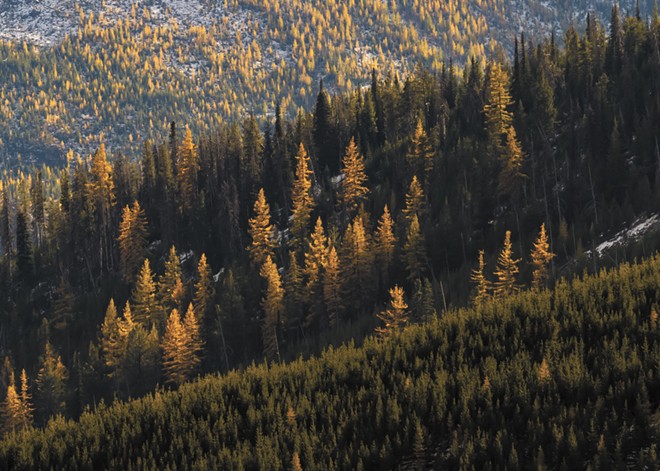
Our Western forests have evolved with fire on the landscape. We need to understand this to both realize how we got into the wildfire crisis and how we can get out of it. We cannot log our way out of it.
The wildfire crisis — the current age of more frequent, larger scale fires over a longer season — has been brought on by three main factors: fire suppression, past logging practices and climate change.
We have had a full-scale suppression of wildfires for over 150 years, making it illegal for tribes to conduct the cultural burning that they practiced for thousands of years. Subsequently, federal mandates required suppression of every wildfire, no matter how remote. Historic logging practices also targeted the largest, most financially valuable trees — the very trees that have survived countless fires. Both of these factors — fire suppression and logging practices — have led our forests to look drastically different.
As U.S. Forest Service researcher Paul Hessburg says, "We have a tree problem." Forests are overstocked, with too many small-diameter trees per acre and a composition of species that are more susceptible to fire. The overcrowding of trees means that they are competing for resources, particularly space and water. These closely growing trees allow fire to spread more rapidly, leading to larger, more catastrophic wildfires. Overcrowded trees are also more susceptible to drought, and when trees are being stressed, they are more vulnerable to disease and insect outbreaks.
The biggest factor that is exacerbating the wildfire crisis, however, is climate change. Summers are hotter and drier. More of our precipitation falls as rain during the spring instead of snow throughout the winter. One might think that rain is good for wildfire prevention, but a deep, slow-melting mountain snowpack provides soil moisture well into the summer. Spring rains run off the landscape, quickly producing a flush of growth of grasses and annuals that can then dry out, providing easily ignitable fuel. Warmer winters have also led to increases in insect infestations.
All this explains that our forests have departed from their historic structure and are not ready for our warming climate. It is not the large, older trees — the trees that have survived countless fires — that are the issue.
So how do we manage our forest to reduce the wildfire risk? Well, Northeastern Washington is one of the best examples in the West of both an ecological and economical approach to the wildfire crisis.
Many regions throughout the West do not have the economic infrastructure to do the restoration required on our forest. The number of timber mills has drastically shrunk since the 1970s, and almost all of those shuttered mills were tooled for large diameter trees. Back in the 1990s, Vaagen Brothers Lumber saw the writing on the wall and retooled its mill in Colville to focus exclusively on small diameter logs. This was a heavy initial investment that has paid off — Vaagen Brothers is able to bid and receive Forest Service contracts to conduct small-diameter thinning projects. This, paired with the Avista biomass plant in Kettle Falls removing slash and noncommercial timber for energy production, further reduces the wildfire risk from timber projects.
"...our forests have departed from their historic structure..."
tweet this
But thinning alone won't solve the problem — we need to bring "good" fire back to the landscape. Tribes spent thousands of years learning how and when to harness fire, burning in the spring and fall when conditions were favorable. These cultural burns have a variety of purposes, from opening up a huckleberry patch to increasing forage for big game species. Tribes across the West are reengaging with their traditional practices. The Spokane Tribal Food Sovereignty Garden in partnership with the Washington Department of Natural Resources will be conducting its first cultural burn this fall and are creating networks with other tribes to relearn their traditional practices.
Prescribed fire is a tool that communities must embrace. These planned, permitted and controlled burns occur in spring and fall to reduce fuel loads and thin out young trees. But agencies, tribes and landowners need to increase the number of skilled practitioners across the West. Communities also need to accept short periods of smoke during these cooler months. This October wildfire practitioners from across the region will meet in Eastern Washington for the Selkirk TREX, also known as prescribed fire exchange. Since 2022, the Selkirk TREX has been increasing the education and capacity of tribal, state and local wildfire professionals to safely plan and conduct prescribed burns.
State and federal land managers are pouring resources into the wildlife crisis. In January 2022, the U.S. Forest Service launched the Wildfire Crisis Strategy to increase the pace and scale of treating the highest priority lands, including much of Northeastern Washington. The Colville National Forest has treated 30,000 acres this year alone and has recently received $50 million dollars to conduct work in Ferry County. DNR has a 20-year strategy to target high priority landscapes — areas that are particularly susceptible to burning and, if ignited, could cause damage to communities. The strategy for both agencies is to thin the forest as needed and then use prescribed and/or natural fire — where appropriate — as maintenance to reduce fuels and open the understory.
Combating the wildfire crisis needs to be a community approach. We need to incorporate traditional Indigenous knowledge with Western science and rural industries to conduct both economically viable and ecological-focused forest restoration across all land ownership. "All Hands, All Lands." ♦
Adam Gebauer is a writer, the public lands program director for The Lands Council, and a board member for the Northeast Washington Forestry Coalition. He has spent over 25 years working as a wildlife and plant ecologist and an advocate for public lands. He can be reached at [email protected]



